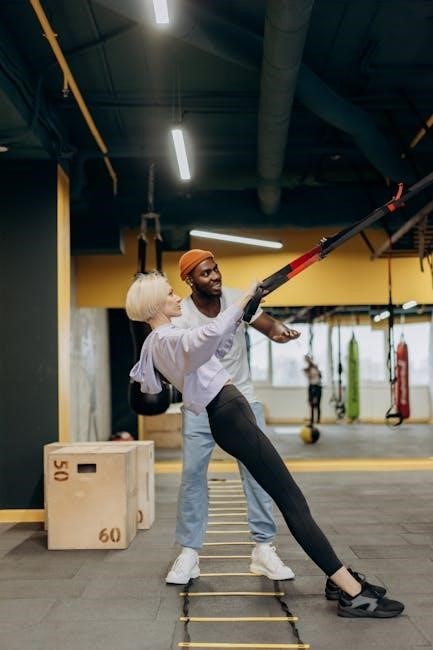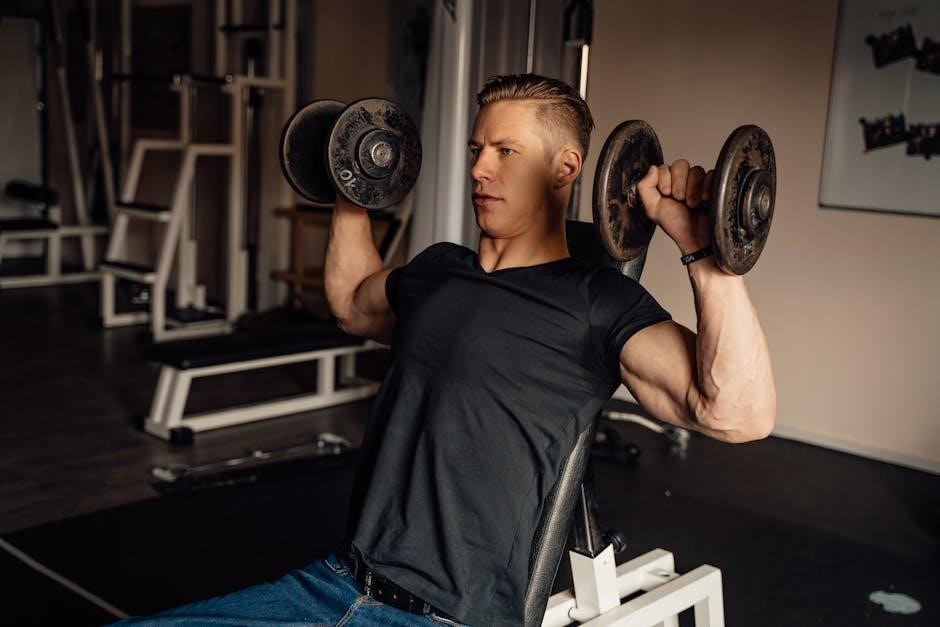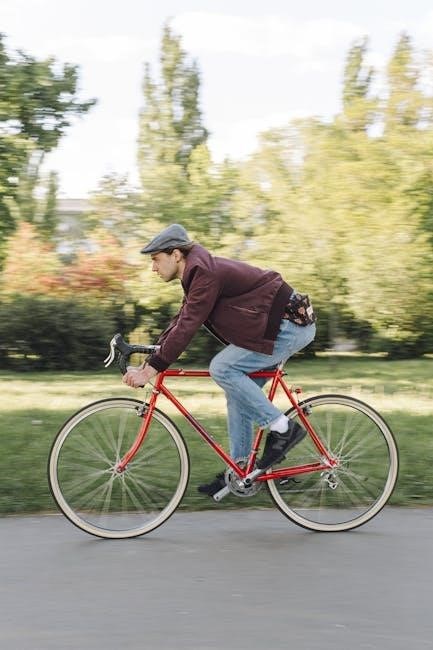
Jean Fit Guide for Men
Finding the perfect pair of jeans can be a challenge. This guide will explore different fits, key factors to consider, and recommendations for various body types, ensuring style and comfort.
Understanding Jean Fits
Navigating the world of men’s jeans requires understanding various styles and how each should fit. Different cuts and fits offer a range of looks and comfort levels, impacting overall appearance. Key features like the leg shape from thigh to ankle, waist placement, and overall silhouette play significant roles.
Whether you prefer a snug, modern embrace or a classic, relaxed feel, understanding the nuances of skinny, slim, straight, tapered, and bootcut jeans is essential. Each fit caters to different body types and occasions. Knowing how jeans should fit around the waist, hips, and thighs helps you choose the most flattering style.
This understanding allows you to maximize comfort and style, ensuring your jeans complement your individual shape and personal preferences. Ultimately, the goal is to find jeans that fit well and reflect your style;

Key Measurements for Perfect Fit
To find the perfect jeans, focus on key measurements. These include waist, inseam, hip, and front rise. Accurate measurements ensure a comfortable and flattering fit.
Waist Measurement
The waist measurement is crucial for a comfortable and secure fit. To accurately measure your waist, use a flexible measuring tape. Stand naturally and wrap the tape around your natural waistline, which is typically the narrowest part of your torso, above your hip bones. Ensure the tape is parallel to the floor and snug, but not too tight. It should be comfortable enough to slide a finger underneath.
This measurement determines the size of the jeans you should choose. Jeans should fit snugly around your waist without needing a belt to hold them up. If the waist is too tight, it will be uncomfortable, and if it’s too loose, the jeans won’t stay in place.
Different jean styles may sit at different points on your waist, so consider the rise of the jeans when taking your measurement. For example, low-rise jeans will sit lower on your hips, while high-rise jeans will sit at your natural waistline. Understanding your waist measurement is the first step in finding jeans that fit perfectly.
Inseam Measurement
The inseam measurement determines the length of the jeans, ensuring they are neither too short nor too long. To measure your inseam, stand straight with your shoes on. Have someone measure from the crotch seam down to the bottom of your ankle bone. Alternatively, you can measure a pair of well-fitting jeans from the crotch seam to the hem.
The correct inseam length depends on your personal preference and the style of jeans. For a classic look, the jeans should slightly break over your shoes. If you prefer a more modern style, you can opt for a shorter inseam that shows more of your shoes. Bootcut jeans require a longer inseam to accommodate boots.
Consider the type of shoes you’ll typically wear with the jeans when determining your inseam length. This will help you choose the correct length for your desired look. Understanding your inseam measurement is essential for finding jeans that fit well and complement your style.
Hip Measurement
Measuring your hip circumference is crucial for ensuring a comfortable and flattering fit in your jeans. To accurately measure your hips, stand with your feet together and measure around the fullest part of your hips and buttocks. Keep the measuring tape level and snug, but not too tight.
Your hip measurement helps determine the overall fit of the jeans, particularly in the seat and thigh areas. Jeans that are too tight in the hips can be uncomfortable and restrict movement, while jeans that are too loose may appear baggy and shapeless.
When selecting jeans, compare your hip measurement to the manufacturer’s size chart. Be aware that sizing can vary between brands and styles. Consider the rise of the jeans as well, as a higher rise may require a different hip measurement than a lower rise. Pay attention to the fabric composition, as jeans with stretch may offer more flexibility in the hip area.
Front Rise
The front rise of jeans refers to the measurement from the crotch seam to the top of the waistband. This measurement significantly impacts where the jeans sit on your waist and affects overall comfort and style. Understanding front rise is key to finding jeans that complement your body type and personal preferences.
Low-rise jeans sit below the natural waist, typically a few inches below the belly button. Mid-rise jeans sit at or slightly below the natural waist, offering a balanced and versatile fit. High-rise jeans sit at or above the natural waist, creating a longer leg line and a more vintage-inspired look.
When choosing a front rise, consider your body shape and comfort level. Taller individuals may prefer a higher rise, while shorter individuals may opt for a lower or mid-rise to avoid overwhelming their frame. The front rise also influences how the jeans fit in the seat and thigh areas, so it’s essential to try on different styles to find the most flattering fit.

Popular Jean Styles for Men
Discover the most popular jean styles for men, from skinny to bootcut, understanding the nuances of each fit and finding the perfect denim to reflect your style.
Skinny Jeans
Skinny jeans are designed to fit snugly from the waist down to the ankles. They offer a modern, streamlined silhouette that has become increasingly popular. When selecting skinny jeans, it’s crucial to prioritize comfort. The jeans should embrace the legs without feeling restrictive or overly tight.
Look for a snug but comfortable fit around the waist and thighs. The length should extend just slightly beyond the ankle. Skinny jeans pair well with various styles, from casual sneakers to dressier boots, making them a versatile option for different occasions.
Consider the fabric composition; a blend with stretch materials will enhance comfort and allow for greater freedom of movement. Skinny jeans are a stylish choice when fitted correctly and paired thoughtfully. Remember to check denim fit guide for men for more details.
Slim Fit Jeans
Slim fit jeans offer a tailored silhouette that balances comfort and style. They are designed to fit closer to the body than straight-leg jeans but without the skin-tight feel of skinny jeans. The key to a great slim fit is ensuring the jeans are snug through the seat and thighs while maintaining a clean, streamlined look down the leg.
These jeans typically feature a slight taper from the knee to the ankle, providing a modern and flattering shape. Slim fit jeans are versatile and can be dressed up or down, making them suitable for various occasions. They pair well with anything from t-shirts and sneakers to button-down shirts and boots.
When choosing slim fit jeans, pay attention to the fabric. A blend with a bit of stretch can enhance comfort and mobility. Ensure the waist sits comfortably without needing a belt to hold them up.
Straight Leg Jeans
Straight leg jeans are a classic and timeless choice for men, offering a versatile fit that works for many body types. These jeans feature a consistent width from the hip down to the ankle, creating a straight, uniform line. This design provides a comfortable and relaxed feel without being too loose or baggy.
The straight leg fit is known for its adaptability, making it easy to pair with various styles and shoes; Whether you’re going for a casual look with sneakers or dressing up with boots, straight leg jeans provide a solid foundation. They offer a balance between slim and relaxed fits.
When selecting straight leg jeans, ensure the waist fits comfortably without needing a belt. The leg should fall naturally, not clinging to the body but also not appearing too wide. This fit offers a clean and classic silhouette.
Tapered Jeans
Tapered jeans offer a modern and stylish fit for men, combining comfort with a streamlined silhouette. These jeans are wider at the hip and thigh, gradually narrowing down towards the ankle. This design creates a sleek, tapered look that accentuates the legs without being too tight.
The tapered fit is a great option for those who want a more fitted style but prefer more room in the upper leg area. It works well with various body types, providing a flattering shape that enhances the overall appearance. Tapered jeans can be dressed up or down, making them versatile.
When choosing tapered jeans, ensure the waist fits comfortably and the thighs have enough room for movement; The taper should start gradually, creating a smooth transition down the leg. This fit offers a balance between comfort and contemporary style.
Bootcut Jeans
Bootcut jeans are a classic style for men, designed to accommodate boots. They feature a straight fit through the thigh and knee, with a slight flare from the knee down to the ankle. This flare provides enough room to comfortably wear boots underneath, making them a practical and stylish choice.
The bootcut fit offers a balanced silhouette, suitable for various body types. It creates a sense of proportion, especially when paired with the right footwear. These jeans are often made from durable denim, ensuring longevity and resilience. Bootcut jeans are versatile and can be worn casually or dressed up slightly.
When selecting bootcut jeans, ensure the flare is not too exaggerated, as this can look dated. The length should be just right, allowing the jeans to drape nicely over the boots without dragging on the ground. Bootcut jeans remain a timeless option.

Factors to Consider
When choosing jeans, consider comfort, body type, and occasion. These factors will help you select the perfect pair that looks great and feels comfortable for any event.
Comfort
Comfort is a crucial factor when selecting jeans. Jeans should fit well around the waist, without needing a belt to hold them up. The material should feel good against your skin, allowing for ease of movement. Consider jeans with a slight stretch for added flexibility and comfort throughout the day.
Avoid jeans that are too tight, restricting circulation or causing discomfort when sitting or bending. A comfortable fit ensures you can wear your jeans all day without feeling restricted. The right level of comfort will depend on your personal preferences and daily activities.

Look for denim that is soft and breathable, especially in warmer climates. Properly fitting jeans should enhance your comfort, making them a reliable and enjoyable part of your wardrobe. The goal is to find jeans that you can wear comfortably in various situations.
Body Type
Understanding your body type is essential for finding jeans that fit well and flatter your figure. Slim fit and slim straight jeans are often a good choice for men with average builds, providing a decent fit without being too baggy. For shorter men, slim tapered jeans with a shorter inseam can create a more proportional look.
Consider your proportions when choosing a style. If you have a larger build, straight leg or relaxed fit jeans may offer more comfort and a better overall balance. Skinny jeans can work for some body types, but it is important to ensure they are not too tight, as this can be unflattering and uncomfortable.
Experiment with different styles to find what works best for you. Look for jeans that complement your shape and highlight your best features. Paying attention to how jeans fit across your hips, thighs, and waist will help you find the most flattering fit for your body type.
Occasion
The occasion for which you’ll be wearing your jeans should influence your choice of fit and style. For casual outings and everyday wear, comfort and personal preference are key. Straight leg, slim fit, or relaxed jeans are versatile options that can be dressed up or down. Consider the overall aesthetic you want to achieve.
For more formal or professional settings, darker wash jeans in a slim or straight fit can be a suitable choice. Avoid overly distressed or casual styles like ripped jeans or very baggy fits. Pair them with a button-down shirt and dress shoes for a polished look.
When choosing jeans for specific activities, such as outdoor adventures or manual labor, prioritize durability and functionality. Look for jeans made from sturdy denim with reinforced stitching and practical pockets. A comfortable fit that allows for ease of movement is essential for these situations.
Leave a Reply
You must be logged in to post a comment.